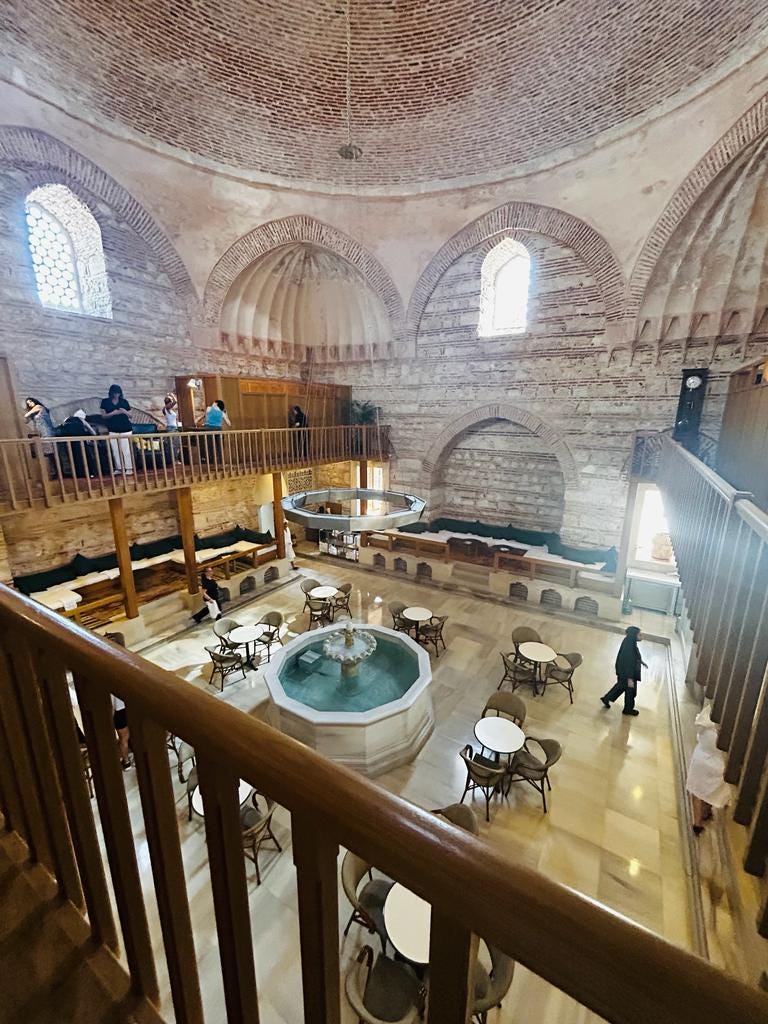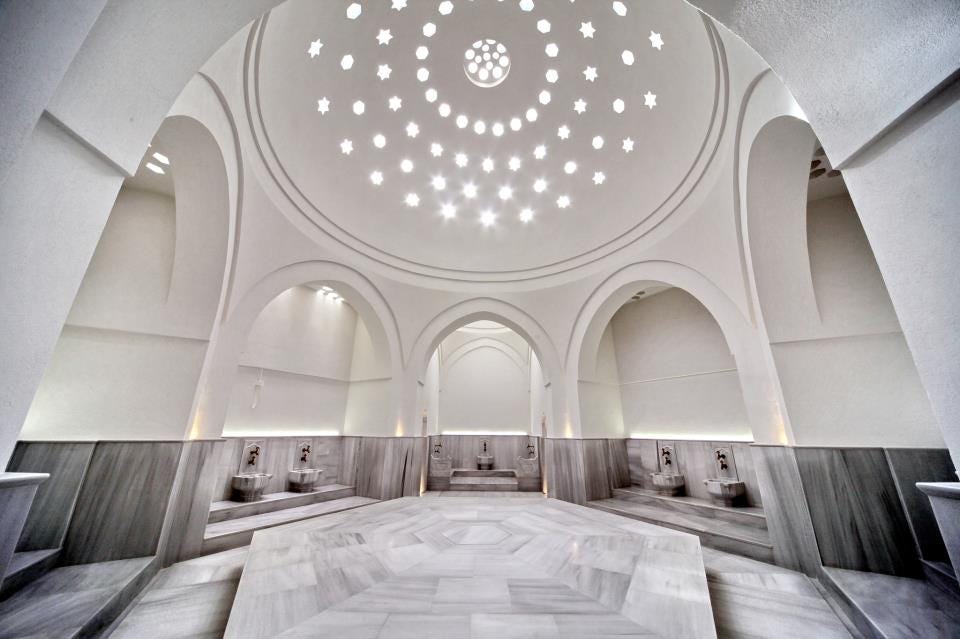I may not be a serious person, but I take bathing seriously. Some people have stamp collections, and others have comic books. I have many very lovely soaps.
Bathing is one of the most sensorial and accessible daily wellness rituals. It's my favorite time of day.
And it's not just me. There's something about hot water, steam, and lather that comforts all of us. The Finnish, for instance, are big fans of bathing - with a population of five million, they have three million saunas! They even hold diplomatic conversations inside them. It’s their way of life.
Similarly, the Japanese pause at open-air hot spring baths set in picturesque natural surroundings called Onsens. And the Koreans and Romans combine relaxation rituals with socialising at the jjimjilbang and thermae.

Last week, my mother and I had the privilege of partaking in what might be the highest form of bathing. We visited a traditional Turkish hamam. We chose the Kılıç Ali Paşa Hamamı, a 15th-century hamam built initially to service the Ottoman navy. The building is an almost Parliament-like, imposing structure, and simply entering it felt momentous.
We were ushered to seats in the central area, from which we had an almost ringside view of the entire hamam. We were served little glasses of hibiscus sherbet. Around us were pillowed resting places, where women who had already finished their hamam experience lay around in white bathing robes, looking very tranquil. It smelled like flowers and soap, and quiet, ambient music played in the background.
Zeynep, our natir - a gentle-faced Aegean matriarch - explained the process to us. We were led to change out of our clothes, stripped down to just the underwear that the hamam handed us. This was a tiny bit out of our comfort zones, but it was dealt with gently and forthrightly so my mother and I didn't feel so daunted.
The wet area of the hamam, the Sicak Odasi, was something from a parallel dimension, made almost entirely from white marble and brass. The ceilings were circular, domed, and super high. They featured these five-point star and oval cutout light vents that helped heat a centrally placed large marble slab, the Göbek Taşı.

Surrounding the marble were these bath areas. The details - from the copper bowls (tas) used to pour water to the very ornate brass tops of the taps - had a certain antiquity about them.
Zeynep and Khadija poured heated flower water on us, and then they had us lay on the heated marble. We just lay there, staring at the light pass into the building through cutouts on the dome. Other women lay around us too. No one said a word. This was a silent, sacred communion.
The heated marble melted away the tension in our backs, breaking us into a mild sweat. After about fifteen minutes, we were led to the separate bathing areas surrounding the marble.
This was when our natirs used these kes mits to scrub us clean. I was enveloped in a cloud of warm, fragrant soap. I surrendered to the experience at this point and closed my eyes. I was in my senses. This was a sacred rite. And for the time being, there was nowhere else I'd instead have been.
We were then dried with gorgeous, soft Turkish towels and wrapped in pestamals like we were babies. Zeynep led to the resting area. Someone smilingly handed us some rosehip tea.
It was as if the natirs had (temporarily) washed our identities and egos away. There was no need for shame or self-consciousness. Or speech. Or thinking. We sat silently until my mom said something about how no one is ever born with clothes on.



